 by "ttyymmnn" (ttyymmnn)
by "ttyymmnn" (ttyymmnn)
Published 09/08/2017 at 12:35
 by "ttyymmnn" (ttyymmnn)
by "ttyymmnn" (ttyymmnn)
Published 09/08/2017 at 12:35
Tags: Planelopnik
; planelopnik history
STARS: 9
Welcome to This Date in Aviation History , highlighting milestones, important historical events and people in aviation and spaceflight from September 6 through September 8.
!!! UNKNOWN CONTENT TYPE !!!
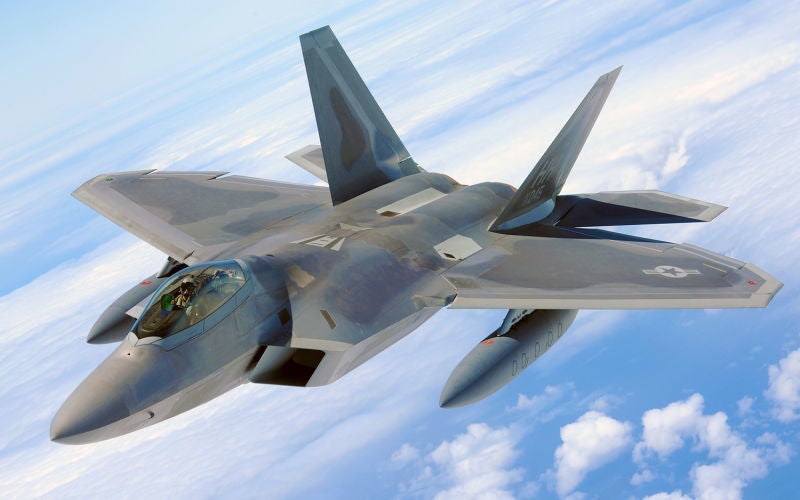
September 7, 1997 – The first flight of the Lockheed Martin F-22 Raptor. The pace of aircraft development, both military and civilian, has been nothing short of extraordinary. In only 44 years, the world went from the Wright Brothers’ first flight to breaking the speed of sound and, particularly with military aviation, it has been a constant race since WWI to create new aircraft that are one step ahead of the enemy. In the 1980s, the Air Force began the process of finding a new air superiority fighter to replace the McDonnell Douglas F-15 Eagle , and also one that would be as flexible in both the fighter and ground attack role as the General Dynamics F-16 Fighting Falcon . As part of that effort, and to counter ever more advanced aircraft being produced by America’s adversaries, the US Air Force began development of what it called the Advanced Tactical Fighter in 1981. The new fighter would also make use of the latest advances in stealth technology. By 1984, the Air Force settled on the requirements for the new aircraft, and they called for a fighter with a 50,000 poound maximum takeoff weight, a radius of 800 miles and the ability for supercruise, meaning the fighter would be capable of maintaining supersonic speeds without the use of gas-guzzling afterburners. Two aircraft were selected for a competition for what would result an very lucrative contract: the Lockheed Martin YF-22, and the Northrop YF-23 . Though the YF-23 was stealthier and faster, the YF-22's thrust vectoring engines made it more maneuverable. Though both aircraft were seen as very capable platforms, the Air Force selected the YF-22, and it entered production in 1996 as the F-22 Raptor.
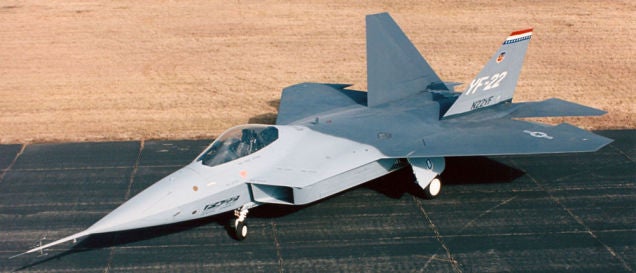
The Air Force describes the fifth generation Raptor as a “combination of stealth, supercruise, maneuverability, and integrated avionics, coupled with improved supportability, represent[ing] an exponential leap in warfighting capabilities. The Raptor performs both air-to-air and air-to-ground missions allowing full realization of operational concepts vital to the 21st century Air Force....The F-22 cannot be matched by any known or projected fighter aircraft.” The Raptor’s stealthy design allows it to target and destroy opponents before being detected by the enemy, and its advanced avionics allow it not only to protect itself but to protect other assets as well, and it is seen as a critical component to the future networked battlefield. During the development of the aircraft, designers toyed with different names and designations for the F-22. At one time, in a nod to its capability for ground attack, it was designated F/A-22, but upon introduction the designation was changed back to F-22. Lockheed had originally chosen “Lightning II” after the iconic WWII fighter, and it was also briefly called the “SuperStar” and “Rapier.” But, perhaps in a reference to the Eagle it was meant to replace, the Air Force eventually settled on another bird of prey, the Raptor. The F-22 is powered by a pair of Pratt & Whitney F119 afterburning turbofans, and has an estimated top speed of Mach 2.5. It is armed with one 20mm M61A2 Vulcan rotary cannon, and can carry air-to-missiles for air defense and/or air-to-ground missiles for ground attack, and 4 underwing pylons can be fitted with either drop tanks or ordnance. Due in part to its high cost, and the continued development of what some consider to be the more advanced Lockheed Martin F-35 Lightning II , production of the Raptor was halted in 2011 after the completion of just under 200 operational aircraft, though the Air Force originally wanted closer to 400. However, the protracted and troublesome development of the F-35 has led to a high demand for the Raptor to respond to a burgeoning number of missions around the world, leading to discussions about restarting the F-22 production line. However, this is highly unlikely. Though the tooling and assembly structures were preserved when the production line was shut down 2012, the cost of restarting the supply train and production line is estimated to be upwards of $50 billion to procure 194 more Raptors. At least for now, the Air Force will have to make due with the Raptors they have, and hope that the F-35 can take on the air superiority role effectively. (US Air Force Photos)
!!! UNKNOWN CONTENT TYPE !!!
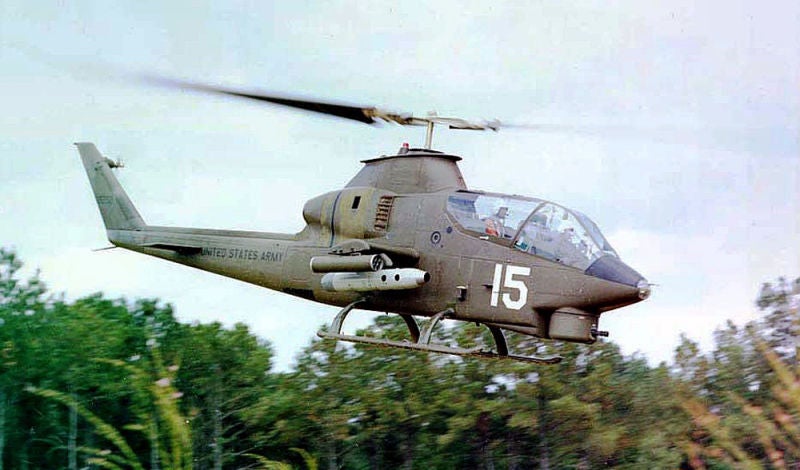
September 7, 1965 – The first flight of the Bell AH-1 Cobra. By the Vietnam War, the US Army had become very much a helicopter-borne force, using the theories of vertical envelopment to carry troops into battle and using the Bell UH-1 Iroquois , better known as the Huey, as their modern Army mule. This all-purpose utility helicopter, which first flew in 1956, came to symbolize the war in Vietnam, as it appeared on the nightly news airlifting troops to the battlefield and evacuating casualties back to medical aid stations. While the Huey proved to be invaluable in these roles, it was also relatively slow, lightly armed, and susceptible to ground fire. The Army responded by turning some of the Hueys into makeshift gunships, but they soon realized the need for a new, dedicated attack helicopter to protect the transport helicopters and support ground troops in combat, particularly when they were under fire and vulnerable in hot landing zones . Bell Helicopter had been working on the first helicopter gunship as early as the 1950s, and they presented the Army with the Bell Model 207 Sioux Scout in 1963, which was essentially the first modern attack helicopter. The Army was impressed, but the Sioux Scout had shortcomings that concerned Army brass. A year later, the Army launched the Advanced Aerial Fire Support System (AAFSS) competition and settled on the Lockheed AH-56 Cheyenne which, after 10 years of costly development, had turned out to be too complex and was ultimately canceled. However, Bell, which had not been asked to take part in the competition, had been continuously developing their own light attack helicopter, using the engine, transmission and rotor system that had been proven effective in the UH-1 Iroquois. The new helicopter, designated the Bell 209, was designed to carry 7.62mm miniguns or a grenade launcher in a chin-mounted turret, as well as rockets or missiles on small wings affixed to the fuselage. A crew of two—pilot in the rear and gunner in the front—sat in a tandem configuration that made for a very narrow profile when seen head-on, making it more difficult to hit from the ground as it bore down on its target.
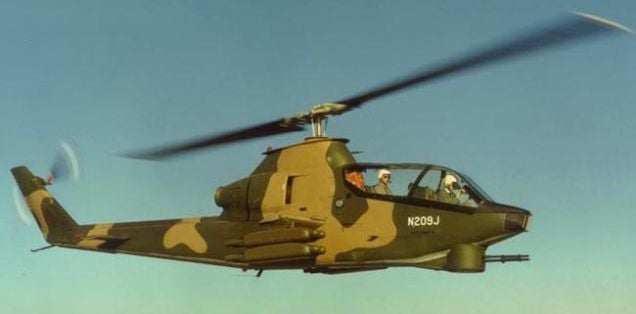
In 1967, the Army adopted the 209, now with a traditional fixed landing skid rather than the original retractable gear, as the AH-1 Cobra. Cobras were in the air over Vietnam by the summer of 1967, and saw action during the Tet Offensive of 1968 and throughout the rest of the war. In addition to their combat support roles, Cobras teamed with Hughes OH-6 Cayuse light observation helicopters to form hunter-killer teams, and also provided support during the rescue of downed pilots. It is difficult to overstate the effectiveness of the Cobra as a dedicated attack helicopter, and it has proven so useful that its basic design was modified into more powerful versions with the addition of a second engine. The resulting Bell AH-1J SeaCobra and Bell AH-1W SuperCobra , as well as the latest version, the Bell AH-1Z Viper , form the backbone of the US Marine Corps attack helicopter fleet and will continue to do so for quite some time. Older AH-1 Cobras also remain in service with export countries, and two Firewatch Cobras serve the US Forest Service by using infrared sensors and cameras to support firefighters on the ground. (US Army photos)
!!! UNKNOWN CONTENT TYPE !!!

September 8, 1968 – The first flight of the SEPECAT Jaguar.
Developing a new military aircraft, or any aircraft for that matter, is an extremely expensive undertaking. But one way for an aircraft company to reduce costs, and take advantage of the expertise of others, is to form a consortium of manufacturers from friendly nations and divide up the work. In the early 1960s, the English Royal Air Force began looking for a new two-seat supersonic trainer to replace the
Folland Gnat T.1
and the
Hawker Hunter T.7
. At the same time, the French
Armée de l’Air
was looking for a new supersonic trainer that could also double as a light attack aircraft to replace the
Fouga CM.170 Magister
, the
Lockheed T-33
and the
Dassault Mystère IV.
The two nations decided to work together on the project, forming a partnership between
Breguet
and the
British Aircraft Corporation
that was known as
Société Européenne de Production de l’Avion d’École de Combat et d’Appui Tactique
(SEPECAT) which translates as “European company for the production of a combat trainer and tactical support aircraft.” The two companies agreed that unique assemblies would be produced by both countries, and that final assembly would take place in both England and France. A second consortium of
Rolls-Royce
in England and
Turbomeca
in France worked together to produce the
Rolls-Royce Turbomeca Adour
afterburning turbofan engines that would give the Jaguar a top speed of Mach 1.6. The design featured a high wing that allowed for easy access to weapons stores and external fuel tanks, a tricycle landing gear, and unique overwing pylons for short-range air-to-air missiles, an arrangement that freed up space under the wings for fuel tanks, weapons or other stores.
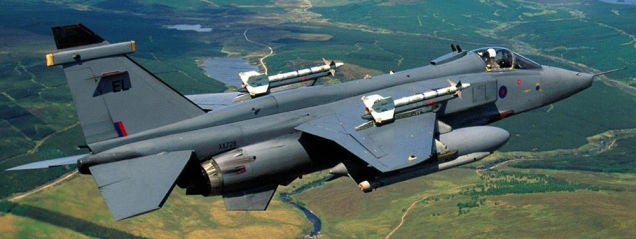
The French were the first to receive the new fighter, in both the E (
École
, or trainer) and A (
Appui
, or Attack/Support) versions in 1973. While initially envisioned as a nuclear-capable attack aircraft, the Jaguar never performed this role for the
Armée de l’Air
, and instead was used as a support aircraft to clear the way for the nuclear armed Mirage fighters. The Jaguar served the French in numerous regional conflicts in their former colonies, as well as the
Gulf War
in 1991. The RAF received the Jaguar into service in 1974 in both fighter/bomber and trainer versions, where it eventually saw action in the Gulf War of 1991 alongside French Jaguars, and returned to the Gulf in 1994 as a target designation aircraft for other
Coalition
aircraft. Unlike the French, the British used the Jaguar in the tactical nuclear strike role where it carried the
WE.177
tactical nuclear bomb. SEPECAT procuded a total of 543 Jaguars for France and England as well as a number of export customers. All but India have since retired the aircraft.
(Top photo US Air Force; second photo author unknown)
!!! UNKNOWN CONTENT TYPE !!!
!!! UNKNOWN CONTENT TYPE !!!
!!! UNKNOWN CONTENT TYPE !!!
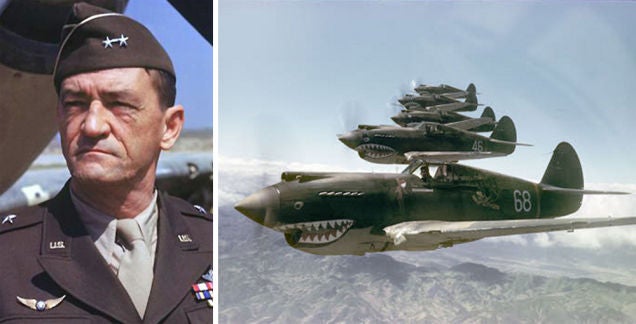
September 6, 1893 – The birth of Claire Chennault. Chennault was born in Commerce, Texas and became a pilot during WWI after a stint as a school principal. A proponent of the pursuit fighter in the 1930s at a time when the US Army was focusing on bombers, Chennault left the Army in 1937 and worked as an aviation advisor to the Chinese government, becoming the head of the 1st American Volunteer Group, better known as the Flying Tigers , in 1941. Chennault led the group, as well as the uniformed US Army Air Forces units that followed the disbandment of the AVG, but openly feuded with General Joseph Stilwell , the US Army commander in China. Stilwell wanted Chennault’s forces to support ground supply routes into China, while Chennault advocated bombing Japanese targets in support of Chinese Nationalist forces. Following the war, Chennault created the Civil Air Transport , later known as Air America , to support the Nationalist fight against Communist China. Chennault died in 1958 at age 64. (US Army photos)
!!! UNKNOWN CONTENT TYPE !!!
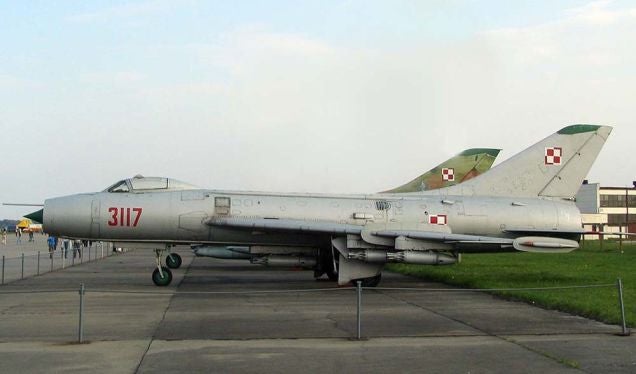
September 7, 1955 – The first flight of the Sukhoi Su-7,
a swept-wing supersonic fighter developed by the Soviet Union and the first Russian fighter to employ an all-moving tailplane (
stabilator
) and a movable cone in the air intake, known as a translating centerbody, to adjust airflow into the engine at supersonic speeds. Given the NATO designation
Fitter
, the Su-7 was designed as a high-speed low-level tactical fighter. Its wing was dramatically swept at 60-degrees and, when fitted with a
Lyulka AL-7
afterburning turbofan, it was capable of reaching speeds up to Mach 2. Though unsuccessful as a dogfighter, the Su-7B variant proved very successful as a tactical ground attack aircraft, becoming the primary Soviet ground attack aircraft of the 1960s. Nearly 1,900 were produced from 1957-1972, and the type was retired in 1990.
(Photo author unknown via
todo-aviones.ar
)
!!! UNKNOWN CONTENT TYPE !!!

September 7, 1942 – The first flight of the Consolidated B-32 Dominator,
a heavy strategic bomber developed as a fallback design should the
Boeing B-29 Superfortress
prove unsuccessful. Following the successful launch of the Superfortress, production of the Dominator was halted after only 118 were built, and those saw only limited action in the war after arriving in the Pacific Theater in the summer of 1945. The B-32 holds the distinction of being the last Allied aircraft shot down by the Japanese when a reconnaissance plane was attacked over Tokyo four days after Japanese Emperor Hirohito announced Japan’s surrender. The attack killed Sergeant Anthony Marchione, the last American airman to die in WWII.
(US Army Photo)
!!! UNKNOWN CONTENT TYPE !!!

September 7, 1940 – The first flight of the Blohm & Voss BV 222, a large, six-engine flying boat developed before WWII as a commercial transport that was pressed into military service to transport troops and supplies. Known as the Wiking (Viking), the BV 222 was the largest flying boat to be put into service during the war, and it saw action in Europe and the Mediterranean. A total of 13 were built, though a number of them were destroyed by Allied fighters both in the air and on the ground, and one may have been shot down by the crew of a US Navy Consolidated PB4Y Liberator . Three BV 222s came into Allied hands, but were soon scrapped or destroyed. The last BV 222 is reportedly resting underwater near Norway, and plans are underway to raise and restore it. (Photo author unknown)
!!! UNKNOWN CONTENT TYPE !!!
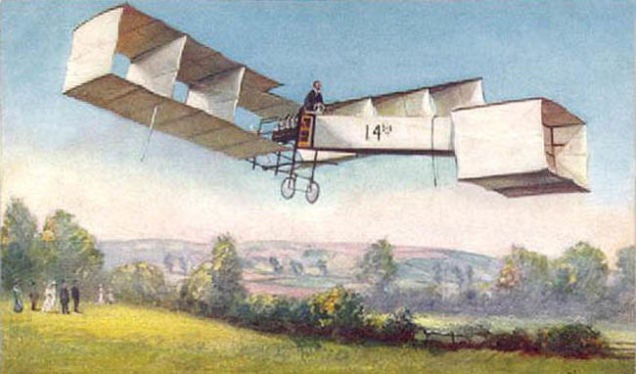
September 7, 1906 – The first flight of the Santos-Dumont 14-
bis
.
Designed by Brazilian aviation pioneer
Alberto Santos-Dumont
, the 14-
bis
(for testing, the aircraft was attached to Santos-Dumont’s non-rigid airship
Number 14
, and
bis
means
again
or
addition
) was designed around the box kite principle, and had a forward box canard for control. The dihedral design of the wings provided lateral stability, and it was powered by an
Antoinette 8V
fuel-injected engine. Piloting the 14-
bis
, Santos-Dumont made the first powered flight anywhere outside of the US, as well as the first publicly witnessed powered flight, leading some to contend that the 14-
bis
is the first true airplane, since the
Wright Brothers
used a launch rail rather than wheels during takeoff. For this reason, Brazilians hail Santos-Dumont as the “Father of Aviation.”
(Illustration author unknown)
!!! UNKNOWN CONTENT TYPE !!!
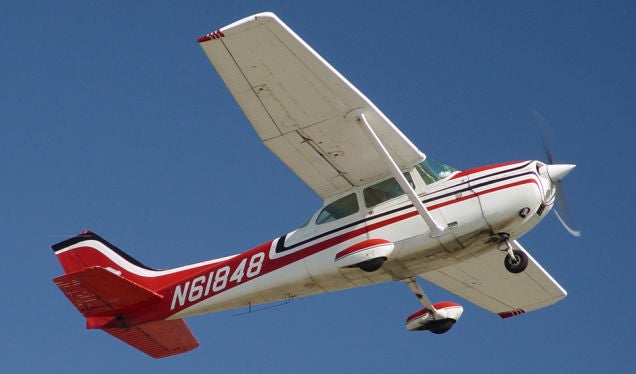
September 8, 1927 – The Cessna Aircraft Company is established.
Clyde Cessna
began as a farmer in Rago, Kansas, and built his first airplane in 1911 after working for the Queen Aeroplane Company in New York. Along with Victor Roos, Cessna founded an aircraft manufacturing company in 1927 (Roos left after just one month), and the company’s first aircraft, the
Cessna DC-6
, was certified on October 29, 1929, the day the American
stock market crashed
. The company closed during the
Great Depression
, but was reopened by Cessna’s nephews in 1934. A brand of
Textron Aviation
since 2014, Cessna is based in Wichita, Kansas and is known for the production of both piston- and jet-powered general aviation aircraft. The company became famous with the introduction of the
Cessna Model 172
in 1956, which has since become the most successful aircraft in history with over 43,000 produced.
(Photo by P. Alejandro Diaz via
Wikimedia Commons
)
!!! UNKNOWN CONTENT TYPE !!!
!!! UNKNOWN CONTENT TYPE !!!
!!! UNKNOWN CONTENT TYPE !!!
!!! UNKNOWN CONTENT TYPE !!!
!!! UNKNOWN CONTENT TYPE !!!
!!! UNKNOWN CONTENT TYPE !!!
!!! UNKNOWN CONTENT TYPE !!!
If you enjoy these Aviation History posts, please let me know in the comments. And if you missed any of the past articles, you can find them all at Planelopnik History . You can also find more stories about aviation and aviators at Wingspan and Planes You’ve (Probably) Never Heard Of .
!!! UNKNOWN CONTENT TYPE !!!
 "HammerheadFistpunch" (hammerheadfistpunch)
"HammerheadFistpunch" (hammerheadfistpunch)
09/08/2017 at 12:40, STARS: 1
Puts it into perspective how hold the computers in the Raptor must be. I mean, My cruiser is the same year as its first flight and it came with a cassette deck...
 "Jcarr" (jcarr)
"Jcarr" (jcarr)
09/08/2017 at 12:50, STARS: 2
Over the wing pylons FTW. Love that feature on the Jaguar. Also love its goofy looking landing gear.
The one looks like it had a bit too much avgas and woke up in an alley.
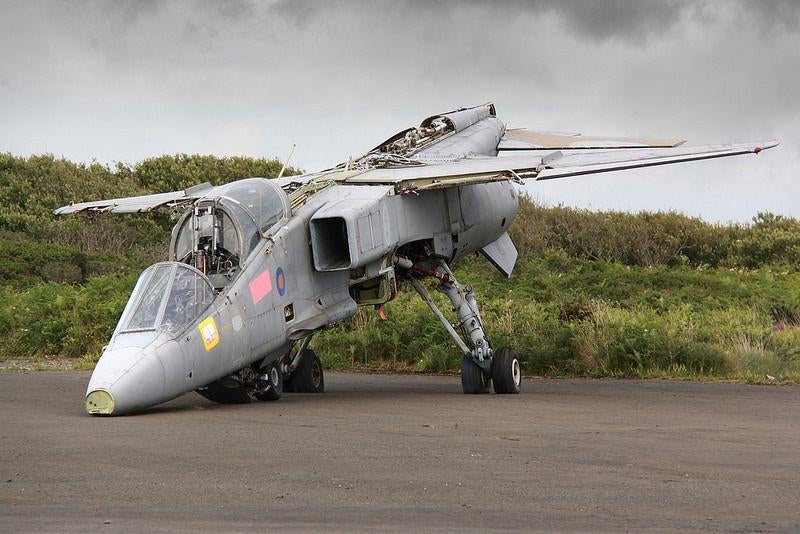
 "Chariotoflove" (chariotoflove)
"Chariotoflove" (chariotoflove)
09/08/2017 at 13:45, STARS: 1
The flight endurance record done in a Cessna 172 is just insane.

09/08/2017 at 13:57, STARS: 0
God, those early AH-1's look so plain compared to the current gen:
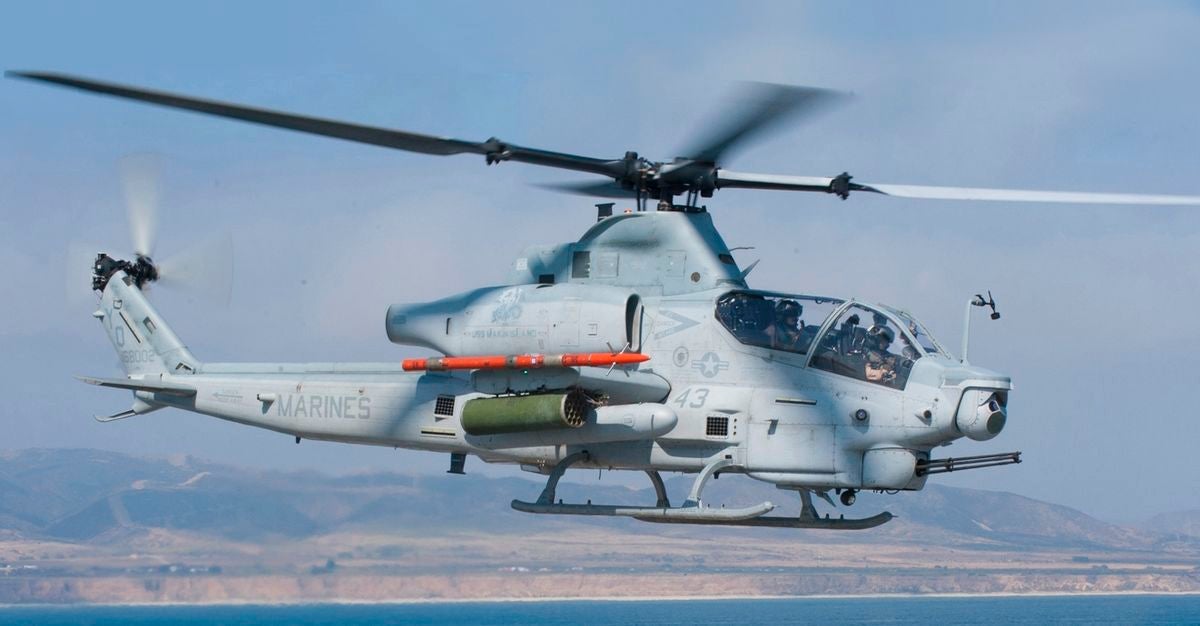

09/08/2017 at 14:00, STARS: 1
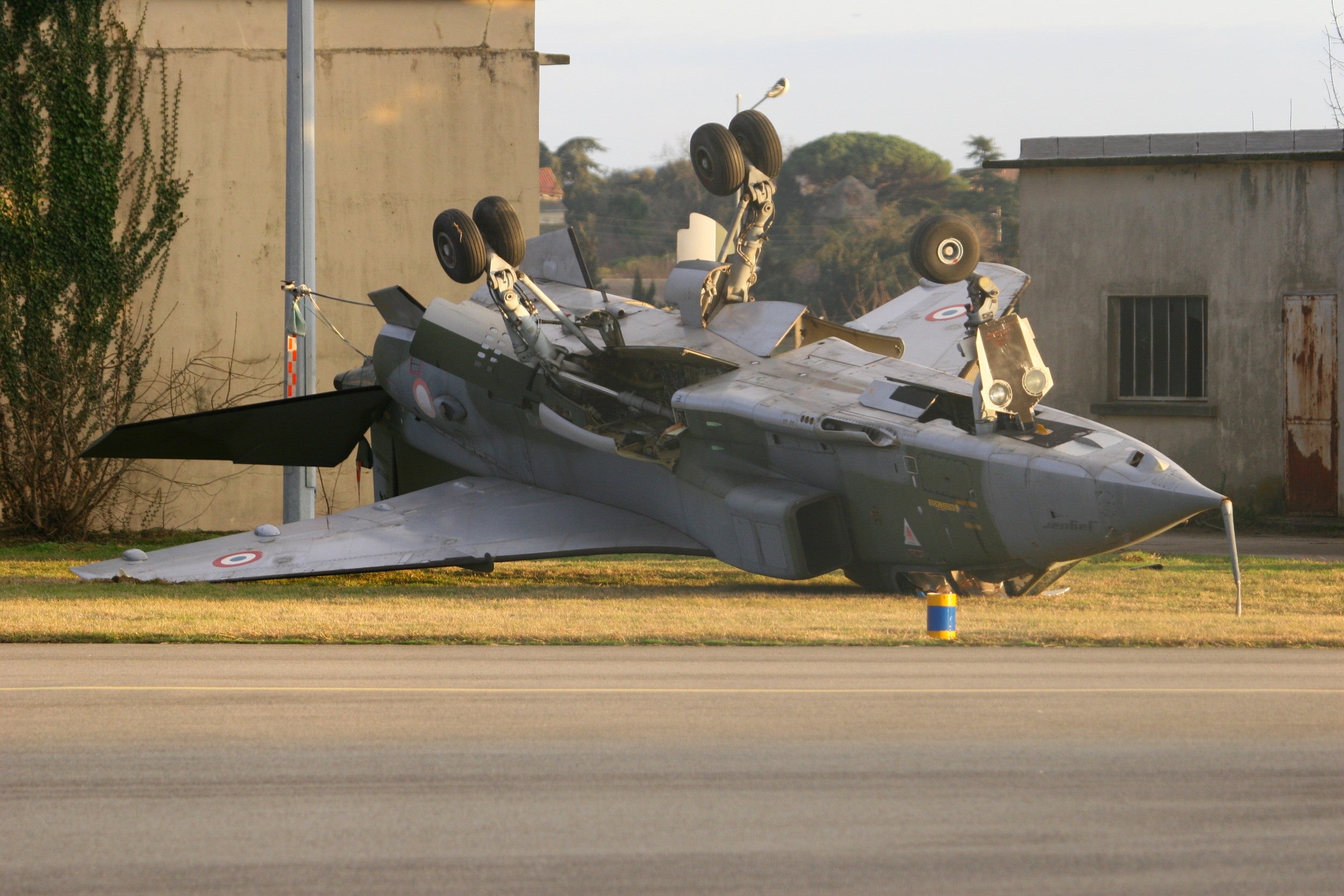
“Ugh, what the hell did I get into last night?”
 "ttyymmnn" (ttyymmnn)
"ttyymmnn" (ttyymmnn)
09/08/2017 at 15:48, STARS: 1
Those Vipers are bad ass, though.
 "ttyymmnn" (ttyymmnn)
"ttyymmnn" (ttyymmnn)
09/08/2017 at 15:51, STARS: 1
We shoulda built a LOT more of them.